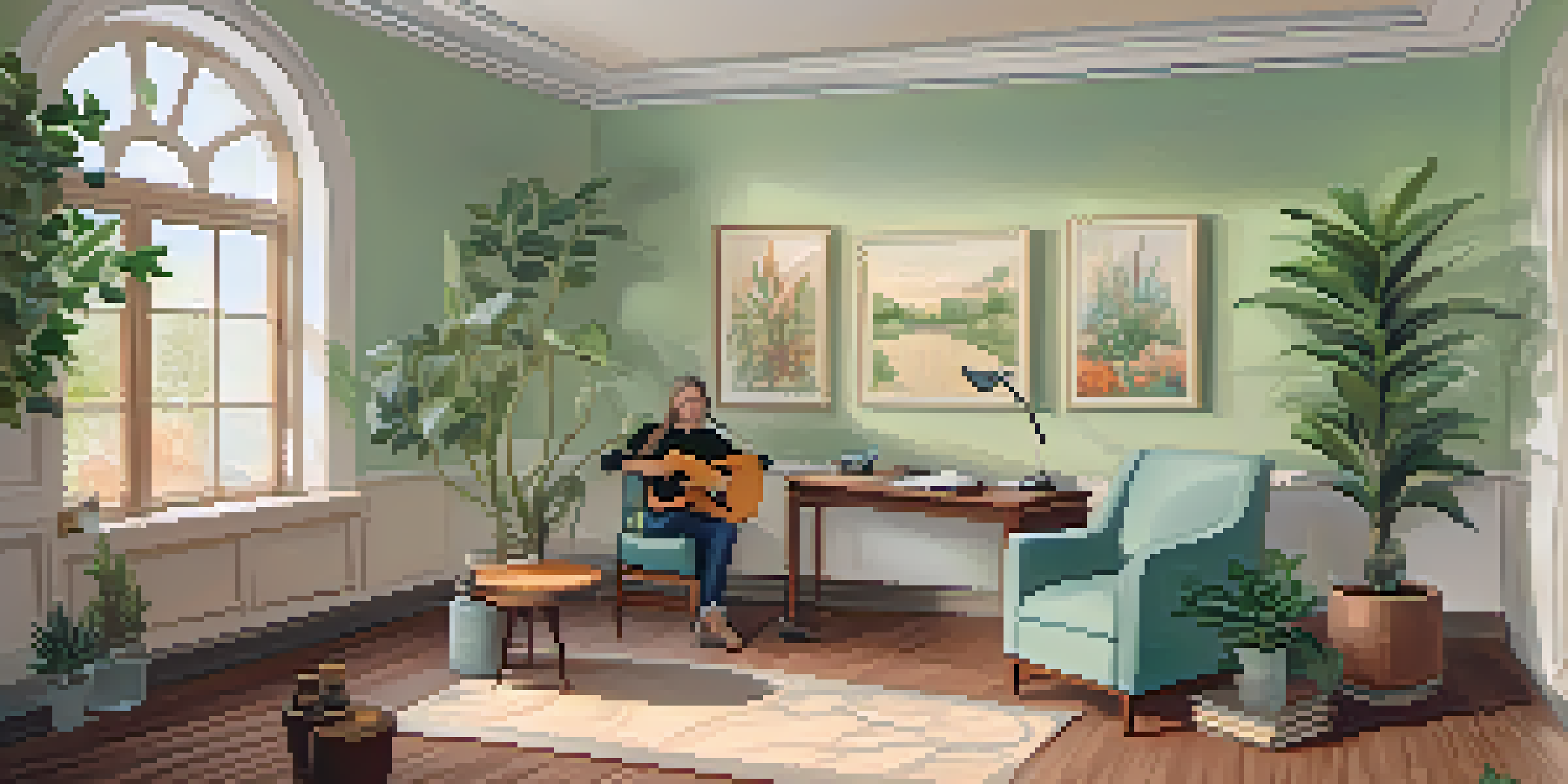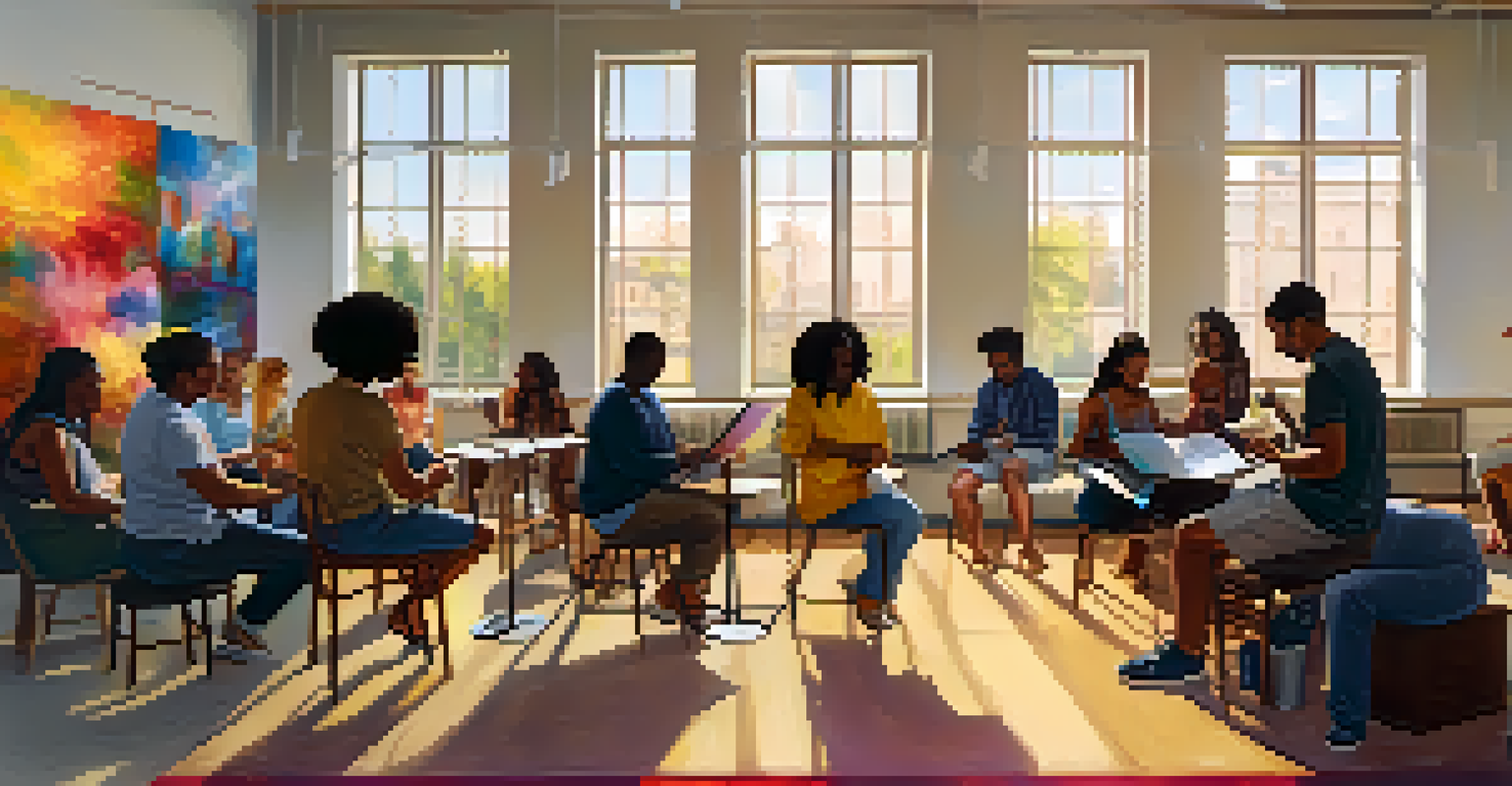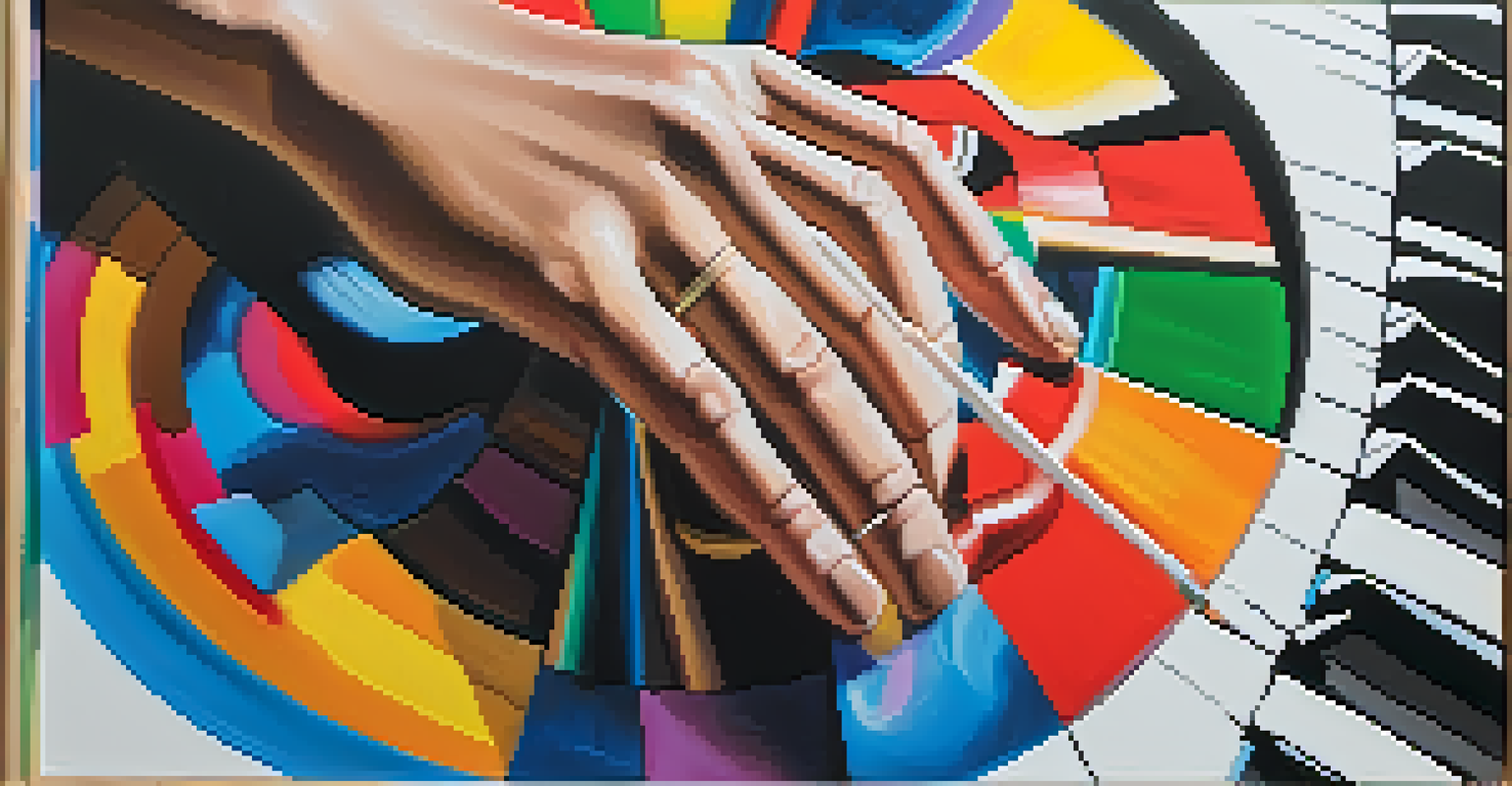The Intersection of Music, Art, and Mental Health Therapies

Understanding the Role of Music in Therapy Settings
Music has long played a significant role in human culture, but its therapeutic benefits are gaining more recognition. In therapy settings, music can evoke emotions, facilitate communication, and help patients express feelings that might be hard to articulate. For instance, a therapist might use soothing music to create a calming atmosphere, making it easier for clients to open up about their experiences.
Music can change the world because it can change people.
Research has shown that listening to or creating music can trigger the release of dopamine, which is often referred to as the 'feel-good' neurotransmitter. This biological response can enhance mood and promote relaxation, proving particularly useful in treating anxiety and depression. Furthermore, engaging in musical activities can foster social connections, which are crucial for mental well-being.
Incorporating music into therapy isn’t just beneficial for individual therapy sessions; it can also be effective in group settings. Group music therapy encourages collaboration and communication among participants, helping them bond over shared experiences and emotions. This sense of community can be incredibly healing, as individuals realize they are not alone in their struggles.
Art Therapy: Expressing Emotions Through Creativity
Art therapy uses creative processes to help individuals explore and express their emotions. By engaging in activities like painting, drawing, or sculpting, clients can convey feelings that may be difficult to express verbally. For example, someone dealing with grief might find comfort in creating a piece of art that symbolizes their loss, allowing for a deeper exploration of their emotions.

The beauty of art therapy lies in its ability to transcend language barriers. Individuals from diverse backgrounds can connect through visual expression, making it an inclusive therapeutic option. Moreover, the act of creating art can be inherently soothing, providing a sense of achievement and boosting self-esteem, which are essential components of mental health.
Music Enhances Emotional Healing
Music therapy can evoke emotions, promote relaxation, and facilitate communication, making it a powerful tool in mental health treatment.
Art therapy can also serve as a powerful tool in processing trauma. By allowing clients to depict their experiences artistically, therapists can guide them through the healing process. This method encourages reflection and can lead to breakthroughs in understanding traumatic events, ultimately fostering resilience and recovery.
Combining Music and Art: A Holistic Approach
The integration of music and art therapies can create a holistic approach to mental health treatment. Combining these modalities allows individuals to express themselves in multiple ways, tapping into various senses and emotions. For example, a therapy session could involve listening to music while creating art, enhancing the emotional experience and making it more profound.
Art enables us to find ourselves and lose ourselves at the same time.
This multi-sensory approach can cater to different learning styles and preferences, making therapy more accessible and effective. Some individuals might find that music inspires their creativity, while others may use art to interpret the emotions stirred by a particular song. This synergy can lead to deeper insights and healing.
Additionally, the collaboration between music and art therapists can enrich the therapeutic process. They can work together to design sessions that incorporate both forms of expression, addressing the needs of their clients more comprehensively. This collaborative effort underscores the importance of a well-rounded approach to mental health care.
The Science Behind Music and Art Therapies
Numerous studies have explored the psychological and physiological effects of music and art on mental health. For instance, research indicates that music can lower cortisol levels, the hormone associated with stress, leading to improved emotional regulation. Similarly, art therapy has been shown to reduce anxiety and enhance coping skills, making it a valuable tool in mental health treatments.
Neuroscience also provides insight into how these therapies affect the brain. Engaging with music activates various brain regions associated with emotion, memory, and even motor skills. Art, on the other hand, stimulates the visual cortex and can enhance cognitive functions like problem-solving and critical thinking, creating a well-rounded therapeutic experience.
Art Therapy Fosters Expression
Art therapy allows individuals to explore and express difficult emotions creatively, which can be particularly helpful in processing trauma.
This scientific backing reinforces the importance of incorporating music and art into mental health therapies. As mental health professionals continue to explore innovative treatments, understanding the underlying mechanisms of these art forms can pave the way for more effective and personalized therapeutic interventions.
Real-Life Case Studies: Music and Art in Action
To illustrate the effectiveness of music and art therapies, let's look at a few real-life case studies. For instance, a young woman struggling with PTSD found solace in music therapy, where she learned to play the guitar. This experience not only provided an outlet for her emotions but also helped her build confidence and resilience as she shared her music with others.
Another case involves an elderly man dealing with dementia, who participated in art therapy sessions. Through painting, he was able to express memories that words could no longer convey. His family reported a noticeable improvement in his mood and engagement, showcasing the power of art in reconnecting individuals with their past.
These examples highlight the transformative potential of music and art therapies in diverse populations. Whether helping children cope with trauma or assisting elderly patients in maintaining their identity, these approaches demonstrate that creativity can be a powerful ally in mental health treatment.
Challenges and Considerations in Therapy Practices
While the benefits of music and art therapies are significant, there are challenges to consider. One common issue is the accessibility of resources, as not all therapy centers may have trained professionals or the necessary materials. Ensuring that clients have access to these creative outlets is crucial for maximizing their therapeutic potential.
Additionally, individual preferences play a significant role in the effectiveness of these therapies. Not everyone resonates with music or art, and some may feel intimidated or apprehensive about participating. Therapists must be sensitive to these feelings, ensuring that sessions are tailored to meet the unique needs and comfort levels of each client.
Integration of Therapies is Effective
Combining music and art therapies creates a holistic approach that caters to diverse needs and enhances the therapeutic experience.
Finally, ongoing training and education for therapists are vital. As research continues to evolve, mental health professionals should stay informed about new techniques and findings in the field of music and art therapy. This commitment to learning ensures that they can provide the best possible care to their clients.
The Future of Music and Art Therapies in Mental Health
As awareness of mental health continues to grow, the future of music and art therapies looks promising. More mental health facilities are beginning to recognize the value of integrating creative approaches into their treatment plans. This shift indicates a broader acceptance of alternative therapies alongside traditional methods.
Advancements in technology also play a role in shaping the future of these therapies. Virtual reality, for instance, can create immersive experiences that combine music and art, offering new avenues for therapeutic engagement. This innovation can make therapy more appealing and accessible to a wider audience, particularly younger generations who are accustomed to technology.

Ultimately, the ongoing research and exploration of music and art therapies will likely lead to even more innovative practices. By prioritizing creativity in mental health care, we can foster a more holistic approach that addresses the diverse needs of individuals seeking healing and support.